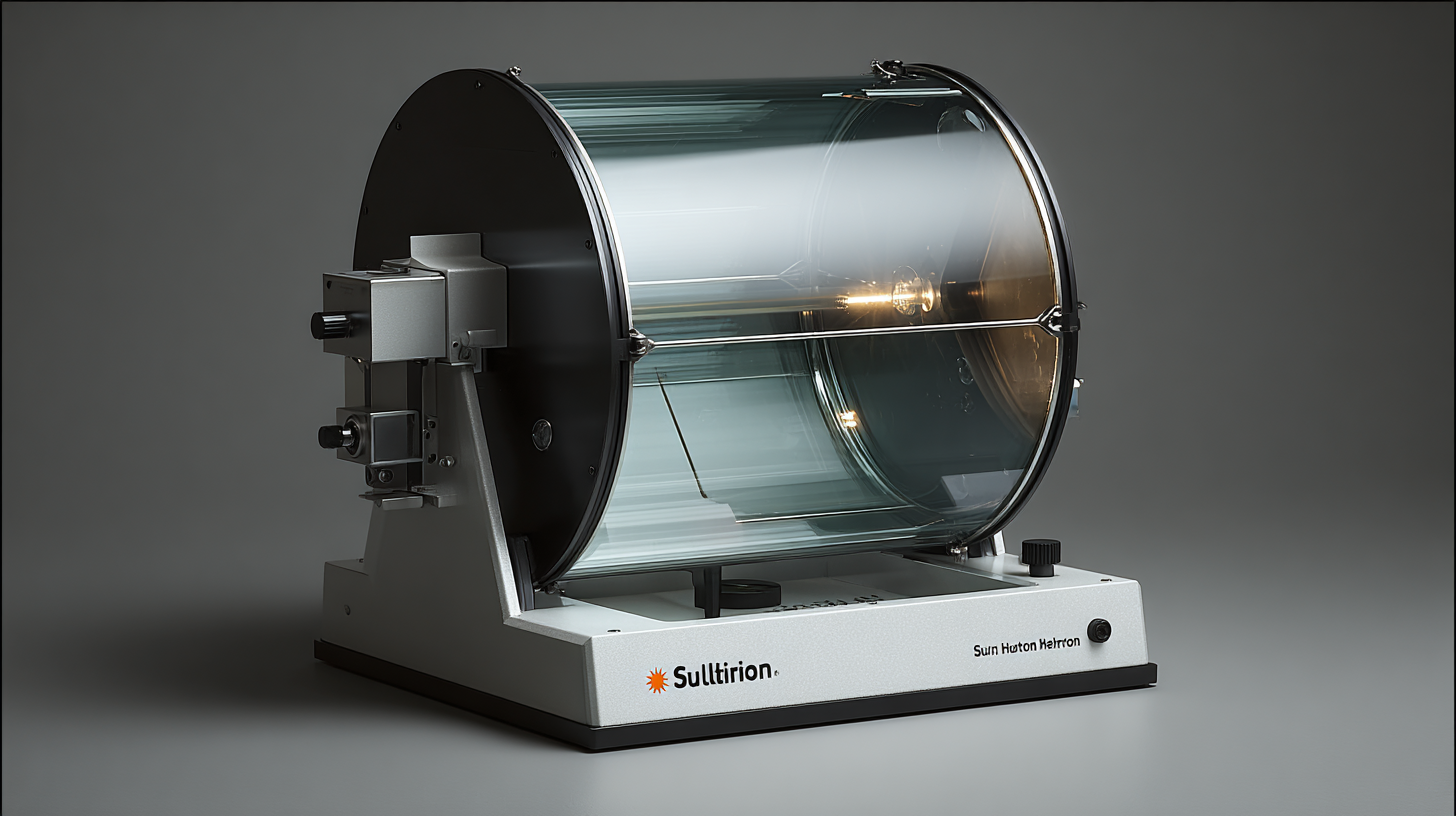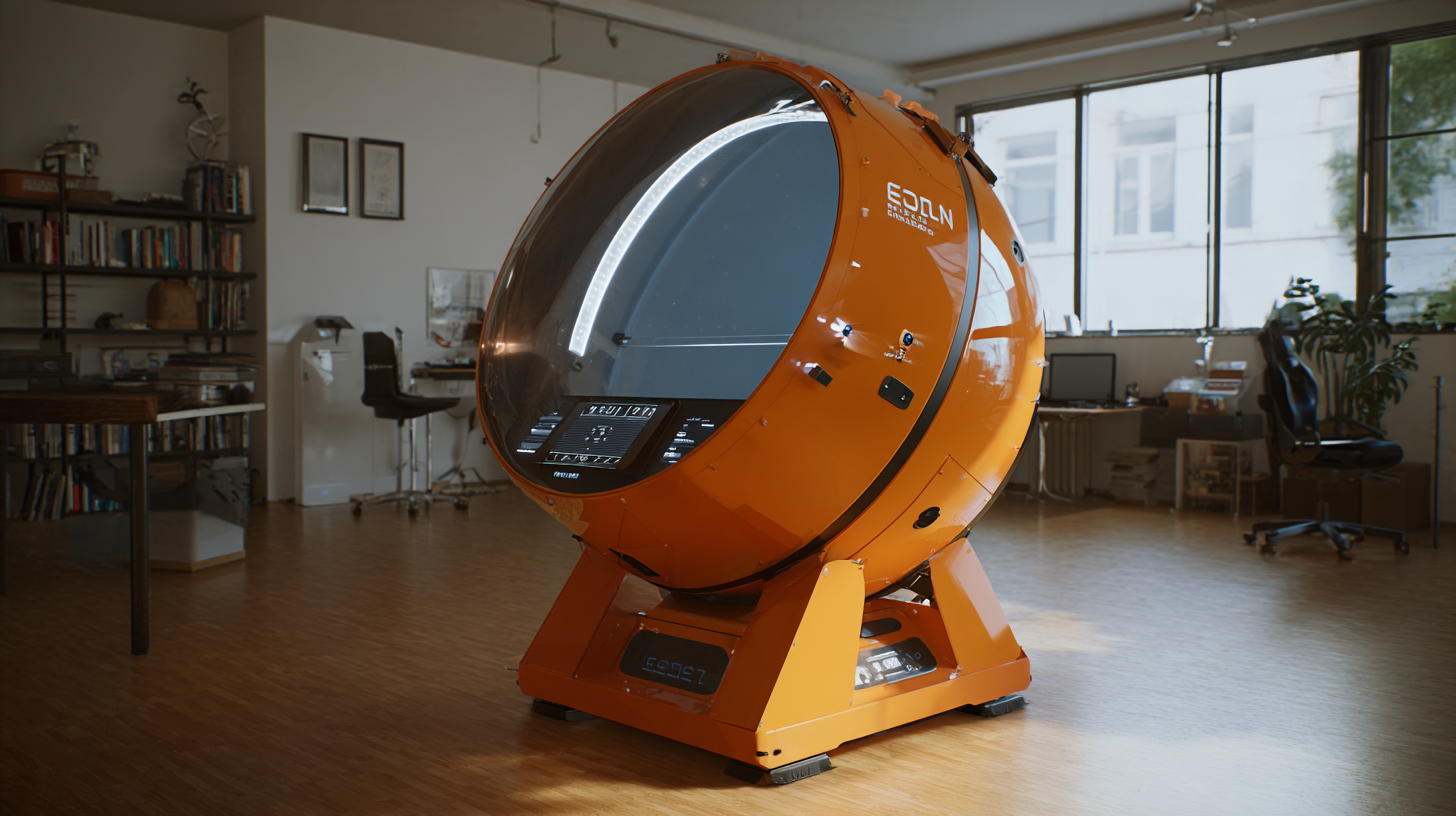
-
Home
-
Product Center
-
Application
-
Support
-
JT Cloud
-
About Us
-
Contact Us
Leave Your Message

In the realm of architectural design and urban planning, precise simulations of sunlight play a crucial role in evaluating the performance and aesthetics of buildings. A key tool in this field is "The Sun Simulator Heliodon", which has gained significant attention for its capacity to accurately replicate natural sunlight conditions. According to a recent report by the International Journal of Architectural Research, the adoption of sun simulators in the design process can enhance energy efficiency by up to 30%, while also improving occupant comfort and overall building performance. The increasing demand for sustainable architecture has propelled the Heliodon to the forefront, as it allows designers to assess solar access and shading scenarios effectively. This blog aims to unveil the technical specifications of the best Sun Simulator Heliodons available globally, providing a comprehensive checklist for buyers keen on integrating cutting-edge technology into their design toolkit.

In today's architectural landscape, the integration of sun simulation technology has become paramount for creating sustainable and energy-efficient buildings. As architects strive to enhance daylighting strategies and minimize energy consumption, the use of advanced sun simulators, such as the Heliodon, plays a critical role. These devices allow designers to visualize sunlight patterns, enabling them to optimize window placement and shading devices effectively. By understanding the solar behaviors around a building site, architects can align their designs with environmental goals, ensuring that spaces are not only aesthetically pleasing but also functionally smart.
Moreover, as the construction industry embraces innovative technologies like Building Information Modeling (BIM) and artificial intelligence, the significance of sun simulation technology is amplified. BIM provides a platform for integrating various aspects of a building's design, while AI assists in refining energy performance simulations. When combined with sun simulation, these tools offer a holistic approach to understanding how passive daylighting techniques can be implemented effectively. This synergy between traditional architectural practices and cutting-edge technology drives the evolution of building designs that prioritize sustainability and the well-being of occupants.
| Specifications | Details |
|---|---|
| Model Type | Benchtop Sun Simulator |
| Illumination Type | LED Based |
| Light Spectrum | Full Spectrum (300-800 nm) |
| Adjustable Angles | 0 to 90 Degrees |
| Power Consumption | 150 Watts |
| Dimensions (L x W x H) | 60 cm x 40 cm x 20 cm |
| Weight | 10 kg |
| Operating Temperature | 10°C to 35°C |
| User Interface | Touch Screen with Software Control |
| Applications | Architectural Design, Environmental Testing |
When selecting the best heliodon for accurate solar simulation, various key features should be considered to ensure optimal performance. High precision in controlling light angles is vital; therefore, look for models equipped with adjustable light sources that can replicate solar positions accurately throughout the year. Additionally, a robust build quality guarantees longevity and stability during simulations, enabling consistent results without disturbances.
Tips: Always assess the heliodon's compatibility with your existing architectural models. Some advanced units offer integration with software, providing seamless data feedback to enhance your simulation accuracy. It’s also beneficial to check for customer reviews and testimonials that speak to the usability of the device, as real-world insights can guide your decision.
Moreover, the choice of light source is crucial; opt for heliodons that utilize LED technology for energy efficiency and longer lifespan. This not only saves on power consumption but also contributes to a more sustainable operation. When you invest in a heliodon, consider the ease of setup and portability, especially if you plan to use it across different projects. These aspects can significantly enhance your productivity and simulation accuracy.
In the realm of sustainable architecture, the use of Heliodon sun simulators has become an essential tool for designers seeking to optimize their projects for light and energy efficiency. These advanced instruments mimic the sun’s path, enabling architects to assess lighting conditions and solar gains throughout the year. By conducting a comparative analysis of various Heliodon models, it becomes clear that key technical specifications such as light intensity, adjustable angles, and software integration play significant roles in their effectiveness.
When selecting a Heliodon sun simulator, consider these tips: first, ensure the device offers customizable settings to match local geographical conditions. This adaptability will improve the accuracy of your simulations. Second, prioritize models with advanced software that can integrate with your existing design tools, allowing for seamless transitions between simulation and actual project development. Lastly, evaluate the portability of the device; a lightweight and easily transportable Heliodon can facilitate on-site analysis, providing real-time insights into natural light interactions with your designs.

 When exploring the technical specifications of leading sun simulators like the Heliodon, performance metrics play a crucial role. These sophisticated devices replicate natural sunlight to facilitate comprehensive testing and development in various fields, from architecture to renewable energy research. High-quality sun simulators offer adjustable light intensity and spectral distribution, enabling users to fine-tune conditions to mimic specific locations and times of day. This precision not only enhances the realism of experiments but also significantly improves the reliability of data collected.
When exploring the technical specifications of leading sun simulators like the Heliodon, performance metrics play a crucial role. These sophisticated devices replicate natural sunlight to facilitate comprehensive testing and development in various fields, from architecture to renewable energy research. High-quality sun simulators offer adjustable light intensity and spectral distribution, enabling users to fine-tune conditions to mimic specific locations and times of day. This precision not only enhances the realism of experiments but also significantly improves the reliability of data collected.
User experience is another vital aspect of the best sun simulators. A well-designed interface allows easy control over multiple parameters such as angle of incidence, light distribution, and duration of exposure. Moreover, compatibility with various software and data logging systems enhances usability, enabling researchers to gather and analyze data efficiently. The ideal sun simulator should also prioritize durability and maintenance ease, ensuring long-term performance in research facilities. With these specifications, global buyers can confidently select the right sun simulator to meet their diverse needs.
The sun simulation technology market is anticipated to grow significantly, with estimates suggesting a reach of $8,242.61 million by 2025 and a projected growth rate of 4.5% annually, leading to a market size of $11,721.81 million by 2033. This upward trend is driven by increased demand for innovative solutions that can replicate natural sunlight for various applications, ranging from architectural design to photovoltaic efficiency testing. As nations strive for sustainability, advancements in this technology are crucial in minimizing carbon footprints, especially in building environments which account for nearly 40% of energy-related CO2 emissions.
To stay ahead in this evolving field, consider these tips: First, invest in research and development to explore the latest materials and design techniques that enhance solar simulation accuracy. Secondly, partnership collaborations, such as those recently formed between tech companies and academic institutions, can drive innovation through shared expertise and resources, fostering advanced solutions that meet market needs. Lastly, keep an eye on regulatory changes and consumer preferences that prioritize eco-friendly practices and energy-efficient technologies, ensuring your products remain relevant in a competitive landscape.